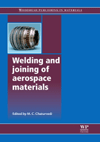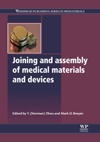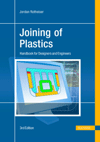
Rather than joining a magnet and
pre-manufactured steel shaft with a zinc alloy bond, the shaft is eliminated
from this assembly. It is formed as it is cast directly to the magnet during
the joining process.
Molten zinc alloy is not commonly considered as an instant curing “glue,” nor as an alternative to instant-cure adhesives for bonding small components. But it has been used for more than 60 years in FisherTech’s Injected Metal Assembly (IMA) process to join components in much the same way as adhesives. While zinc alloy can’t replace adhesives in all applications, it can do so in many assemblies without the problems of peeling and thermal degradation inherent with conventional adhesives, and without the need for special surface preparation.
The process of using zinc alloy as a bonding agent resembles that of using injection molding around inserts. Zinc alloy can join a wide range of materials such as metals, plastics, ceramics, glass, paper, engineered synthetics, textile fibers, and elastomers. The method of joining the materials is such that part-to-part consistency is ensured even over long production runs.
The IMA process has much in common with adhesive bonding, such as excellent stress distribution, joining of dissimilar materials, and joining materials of differing thickness. But the molten alloy bond requires little or no surface preparation of the materials. The bond also performs well in harsh environments where only specialty adhesives and a few injection-molding resins could maintain their integrity.

In this shaft-to-grinding-stone application, a
thin film of zinc alloy bonds the components with a strong mechanical lock. The
joining operation is completed in less than a second. As compared to epoxy, the
zinc alloy bond eliminates curing time, and the fixturing tool ensures close
tolerance, part-to-part consistency.
While adhesives need a carefully prepared surface for proper bonding, zinc alloy requires little, if any, preparation, as the adhesion properties of zinc alloy are forgiving of substrate impurities. The materials being bonded need only be industrially clean. The molten alloy’s high fluidity fills voids. In fact, such voids can actually improve the mechanical bond as they provide an even greater surface area for adhesion. This high fluidity compensates for the presence of release oils, as well as most coatings and paints that don’t outgas at low temperatures, permitting a strong mechanical bond. Even PTFE presents no obstacle for zinc alloy’s bonding capabilities, even without the application of primers.
Zinc alloy’s high fluidity property also contributes to performance when it comes to bonding strength. Stress distributes uniformly throughout the joint, as the molten alloy completely fills the space between the components. The alloy’s shrinkage delivers a shrink-fit adhesion combined with high stiffness and resistance to pull-off forces. The components themselves will fail before the alloy bond breaks. The metallic bond also allows nondestructive testing with X-rays or eddy current methods to verify joint integrity.

As compared to epoxy, the zinc alloy bond in a shaft-to-grinding-stone
application eliminates curing time, and the fixturing tool ensures close
tolerance, part-to-part consistency.
Zinc alloy also endures harsh environments, thereby delivering long-term service life. The alloy performs well in operating temperatures up to 230 Deg F (110 DegC). Zinc alloy bonds between most materials maintain integrity even when the materials have different coefficients of expansion. Where a component material’s shrinkage differs from the alloy, shrink-to features may be designed to compensate for the differences. The metal bond won’t become brittle or show undue stress at temperatures down to –40 Deg F (-40 DegC). Zinc alloy has excellent corrosion resistance under normal atmospheric conditions, and in many aqueous, industrial and petroleum environments. It resists gases and most solvents, with the exception of strong acids and caustic solutions.
Alternate joining
The Injected Metal Assembly process is suitable for virtually any assembly of small components that can be joined by adhesives, soldering, welding, brazing, or mechanical processes such as staking, press fitting, and crimping. Quality, consistency, and productivity are typically improved, and costs are typically significantly reduced, compared to these other joining methods.Zinc alloy bonding is well suited for brittle and delicate materials. In one application, joining of an aluminum shaft to a glass disc is achieved in seconds, with no deformation or cracking of the delicate material. In another application, where a shaft is joined to a fragile magnet, the two components are held in precise position in the fixturing tool for injection of the zinc alloy bond. Within less than a second, the assembly is ejected from the tool and ready for immediate use in the application. The zinc alloy hub that joins the magnet and shaft can incorporate a functional feature, such as a stop pin. The production rate is over 1,000 units per hour.
Alternatively, there is the potential for considerable cost savings when the pre-manufactured shaft can be eliminated. The shaft is formed as it is cast directly to the magnet. The larger volume of injected alloy that forms the shaft slows production to 600 units per hour, but overall cost reduction is realized.
In another example, a magnetic bearing, with a 7.62 mm (0.30-in.) diameter, is encased in a cast ring that provides an accurate outside diameter to within 0.013 mm (0.0005-in.). The brittle magnet is neither cracked nor deformed.
FisherTech’s Injected Metal Assembly systems are currently used to provide joining of assemblies in a variety of industries, including controls, appliance, electronic, power tool, hardware and telecom.
For more information, email: info@fishertech.com






